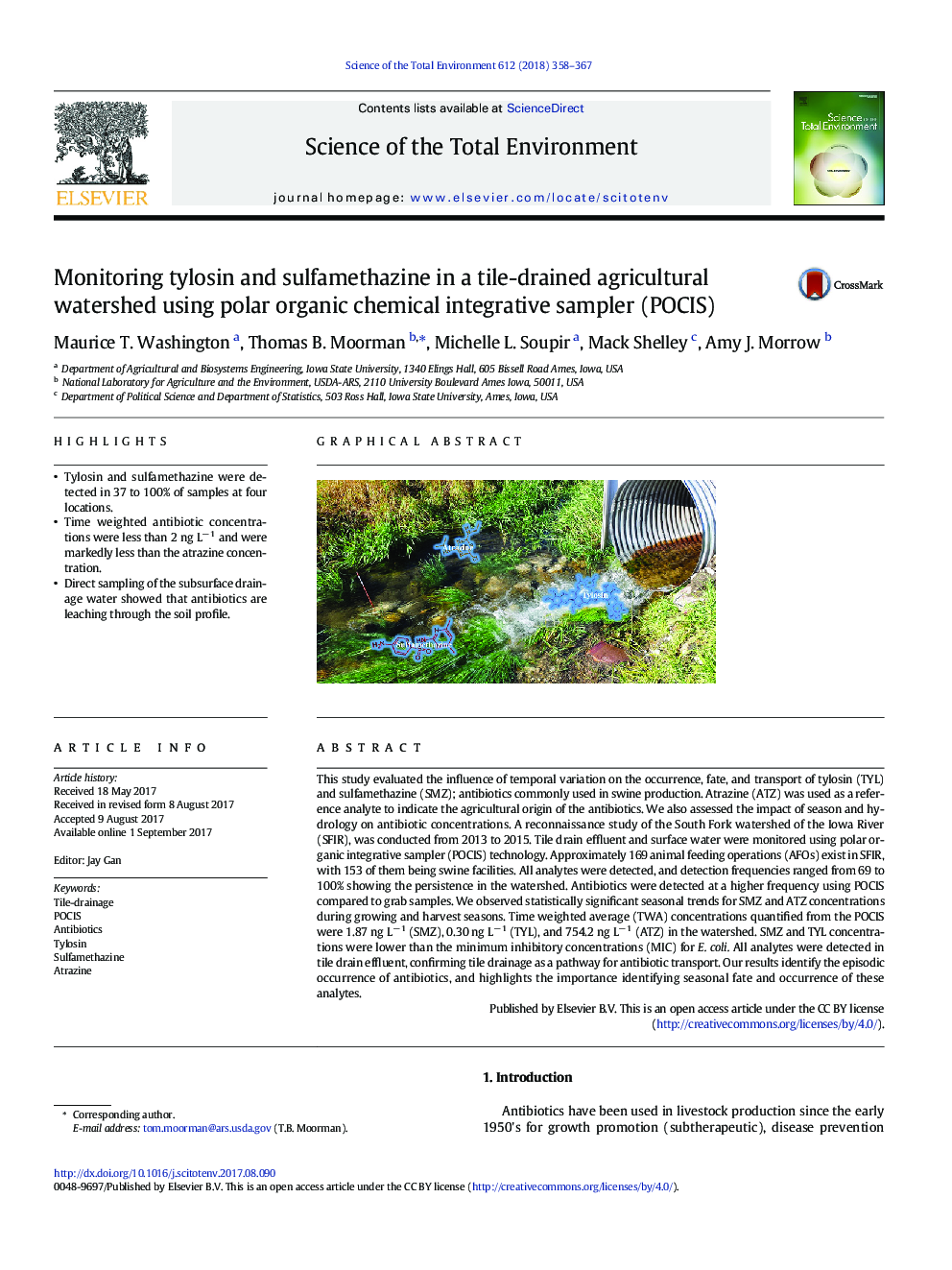| کد مقاله | کد نشریه | سال انتشار | مقاله انگلیسی | نسخه تمام متن |
|---|---|---|---|---|
| 5749892 | 1619691 | 2018 | 10 صفحه PDF | دانلود رایگان |

- Tylosin and sulfamethazine were detected in 37 to 100% of samples at four locations.
- Time weighted antibiotic concentrations were less than 2 ng Lâ 1 and were markedly less than the atrazine concentration.
- Direct sampling of the subsurface drainage water showed that antibiotics are leaching through the soil profile.
This study evaluated the influence of temporal variation on the occurrence, fate, and transport of tylosin (TYL) and sulfamethazine (SMZ); antibiotics commonly used in swine production. Atrazine (ATZ) was used as a reference analyte to indicate the agricultural origin of the antibiotics. We also assessed the impact of season and hydrology on antibiotic concentrations. A reconnaissance study of the South Fork watershed of the Iowa River (SFIR), was conducted from 2013 to 2015. Tile drain effluent and surface water were monitored using polar organic integrative sampler (POCIS) technology. Approximately 169 animal feeding operations (AFOs) exist in SFIR, with 153 of them being swine facilities. All analytes were detected, and detection frequencies ranged from 69 to 100% showing the persistence in the watershed. Antibiotics were detected at a higher frequency using POCIS compared to grab samples. We observed statistically significant seasonal trends for SMZ and ATZ concentrations during growing and harvest seasons. Time weighted average (TWA) concentrations quantified from the POCIS were 1.87 ng Lâ 1 (SMZ), 0.30 ng Lâ 1 (TYL), and 754.2 ng Lâ 1 (ATZ) in the watershed. SMZ and TYL concentrations were lower than the minimum inhibitory concentrations (MIC) for E. coli. All analytes were detected in tile drain effluent, confirming tile drainage as a pathway for antibiotic transport. Our results identify the episodic occurrence of antibiotics, and highlights the importance identifying seasonal fate and occurrence of these analytes.
350
Journal: Science of The Total Environment - Volume 612, 15 January 2018, Pages 358-367